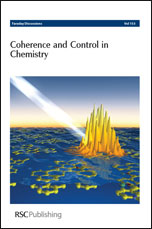Nonadiabatic ab initio molecular dynamics including spin–orbit coupling and laser fields
Abstract
Nonadiabatic ab initio molecular dynamics (MD) including spin–orbit coupling (SOC) and laser fields is investigated as a general tool for studies of excited-state processes. Up to now, SOCs are not included in standard ab initio MD packages. Therefore, transitions to triplet states cannot be treated in a straightforward way. Nevertheless, triplet states play an important role in a large variety of systems and can now be treated within the given framework. The laser interaction is treated on a non-perturbative level that allows nonlinear effects like strong Stark shifts to be considered. As MD allows for the handling of many atoms, the interplay between triplet and singlet states of large molecular systems will be accessible. In order to test the method, IBr is taken as a model system, where SOC plays a crucial role for the shape of the potential curves and thus the dynamics. Moreover, the influence of the nonresonant dynamic Stark effect is considered. The latter is capable of controlling reaction barriers by electric fields in time-reversible conditions, and thus a control laser using this effect acts like a photonic
- This article is part of the themed collection: Coherence and Control in Chemistry

 Please wait while we load your content...
Please wait while we load your content...